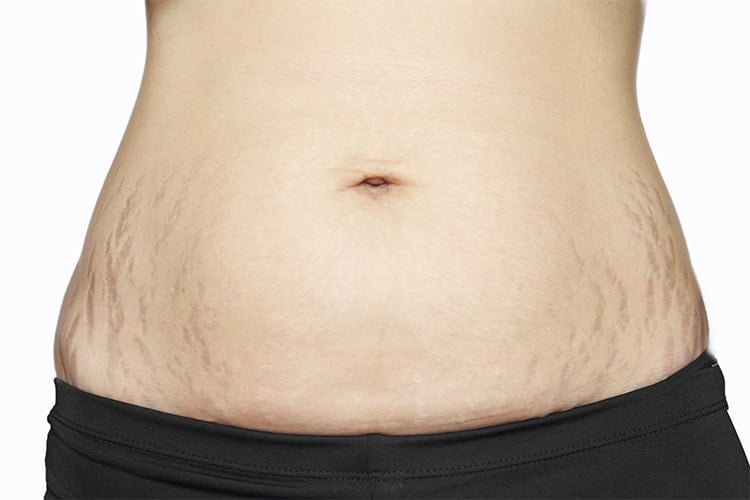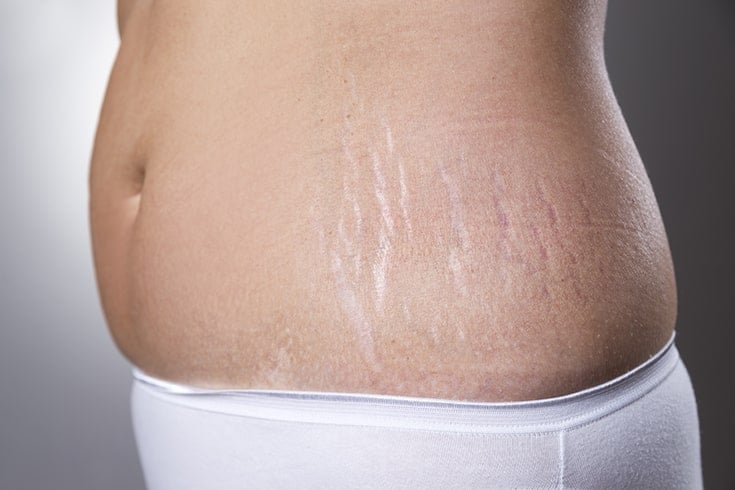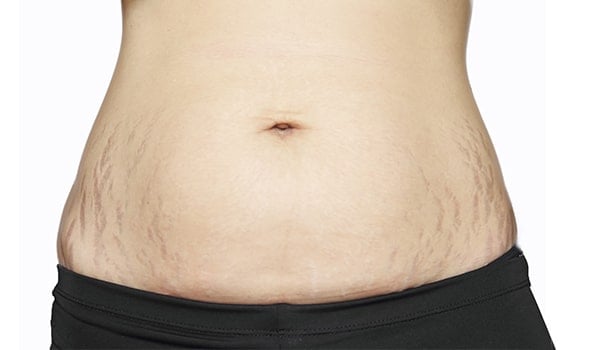Stretch marks are a common topic among women. The reality is that many women get stretch marks at least once in their life. And while there are many different causes, like rapid weight loss or gain, the reality is that stretch marks are mostly caused by genetics.

According to a recent study, genetics is the X factor whether you get or do not get stretch marks.
What Does The Study Show?
The study, published in the Journal of Investigative Dermatology, showed that genetics can seriously increase or decrease your odds of getting stretch marks.
The study included 33,930 people, 4,967 of which were women with severe pregnancy-related stretch marks. Scientists from the genetics company 23andMe examined the DNA of all volunteers. They found mutations in or near four specific genes, ELN, SRPX, THEM18, and HMCN1, all of which increase the risk of stretch marks by 40%.
Of the four genes, ELN, or elastin, was the most strongly tied to stretch marks, especially in those during pregnancy. Elastin is a component of elastic fibers, responsible for helping tissues stretch and retract.
According to the author of the study, Joyce Tung, this gene, and genetics, make some people more prone to stretch marks. The study found out that 25% of men reported having stretch marks, and 55% of women.
Risk Factors For Stretch Marks:
If you look at the risk factors for stretch marks, you will see that the first two are supported by the study. These are the risk factors for developing stretch marks:
- Being a female
- Having a family history of stretch marks
- Being pregnant
- Being overweight
- Rapid weight loss or weight gain
- Using corticosteroids
- Genetic disorders like Marfan syndrome and Cushing’s syndrome
What Can You Do?
The study also examined some treatments you can use for stretch marks. Here are the three science-approved and based prescriptions.
Tretinoin Cream:
Considered one of the best stretch mark creams, tretinoin cream can help reduce the appearance of stretch marks. The cream works best on stretch marks that are a few months old and still pink or red in color. Mothers who apply this type of cream on a regular basis during pregnancy reduced the baby bump related stretch marks by 20%.
Microdermabrasion:
Microdermabrasion is a procedure in which a professional uses a hand-held device to blow abrasive crystals onto the skin. The process gently removes the top layer of the skin and triggers the growth of new and more elastic skin. While the treatment is quite expensive, an can cost $150 one, it is also effective and efficient. A study published in the Journal of the Egyptian Women’s Dermatologic Society in 2008 showed that five treatments can reduce the appearance of stretch marks in more than half of patients.
Laser Therapy:
Laser therapy is one of the most popular skin therapies in latest years. The therapy utilizes intense light directed at your skin. According to supporters of laser therapy, this method stimulates collagen, elastin, and melanin production. Intensely pulsed light therapy is the most efficient and effective laser therapy. You can even use it to treat older stretch marks.

How To Prevent Stretch Marks:
According to science, there is no way to prevent stretch marks if you are genetically predisposed to have stretch marks. However, some women believe that they can alter their lifestyle and reduce the risk of stretch marks. And practice shows it is possible. Here are a couple of lifestyle changes you have to make to reduce the risk of stretch marks appearing.
- Control Your Weight, Especially During Pregnancy
- Stay hydrated at all times. Drink water, but also apply moisturizer topically
- Stick to nutrient-rich diet, rich in vitamin C, vitamin E, zinc, and protein
- Go outside to get some vitamin D
- Treat fresh stretch marks the moment they appear
[sc:mediad]
Stretch Marks In Pregnancy:
Pregnancy is the most common period in which women get stretch marks. According to data, between 50% and 90% of women develop stretch marks before delivery.
There are a couple of explanations. First and foremost, your hormones are out of sync, and completely in chaos. During pregnancy, hormones bring more water into the skin, making it easier to tear when stretched.
Another reason for stretch marks during pregnancy is weight gain, and after that, weight loss. Some women gain weight rapidly in pregnancy, and that can cause some damage to your skin.
Are There Natural Solutions?
We talked about the science-based ways to treat stretch marks. But some women want to stick to natural remedies for stretch marks and believe they are also effective. We have to stress that natural remedies work best on fresh and new stretch marks. Old stretch marks can rarely be treated with anything else than laser therapy. With that in mind, here are some natural remedies you can try.
